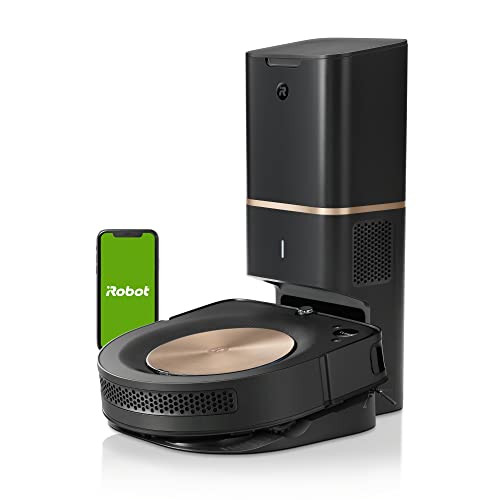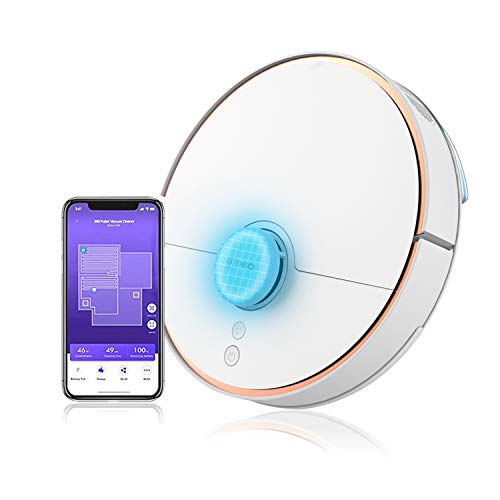 How to Take Care of a Robot Mop and Vacuum
How to Take Care of a Robot Mop and VacuumA robot vacuum or mop can make cleaning easier. They also require regular maintenance, such as emptying the dustbins and washing the reusable cleaning pads in conformity with the manufacturer's guidelines, or removing the single-use ones and keeping the sensors cleaned.
Find features for mapping to avoid making repetitive trips over the same areas and app integration to set schedules, alter power modes and settings, and save maps of your home.
1. Clean the Dirt Bin
Regular maintenance is essential for all robot vacuums and mops. This includes emptying dirt bins and washing pads, as well as keeping track of the replacement consumables. The better you maintain these components, the more they will last. Certain cleaning robots require a little extra attention, especially those that have water tanks.
Firstly, empty the dirty dustbin completely following every cleaning session. This is one of the simplest tasks you can do, but it is vital for the smooth operation of your robot. You should also keep your filter clean regularly. Consult the user manual for your specific model to determine the frequency and how you should clean the filter.
While the mopping function of your robot can remove dust from your floors, there are tiny particles that can accumulate in cracks and gaps on flooring. These include hair and skin particles such as mites, dandruff, dirt and pet hair. To avoid these particles from causing health problems it is crucial to regularly use the vacuum cleaner or sweep robots to clean these areas.
 If you plan to use your robot mop, it is crucial to select a model that has a high-quality hardware and large water and dust tanks. LEGEE for instance is one of the largest dust bins as well as water tanks in its class that means you won't have to stop cleaning or interrupt the robotic mop to refill the tank.
If you plan to use your robot mop, it is crucial to select a model that has a high-quality hardware and large water and dust tanks. LEGEE for instance is one of the largest dust bins as well as water tanks in its class that means you won't have to stop cleaning or interrupt the robotic mop to refill the tank.Finally, don't put any vinegar or floor cleaners into your robot mop's water tank unless instructed by its manufacturer. These substances can damage the robot and invalidate the warranty.
A robot mop and vacuum is the perfect way to reduce your time to concentrate on more pressing matters like your family or work. Some stains and dirt are too difficult for the robot to take on. It is also recommended to use a traditional vacuum to clean the areas that your robot cannot reach.
2. The Cleaning Pads
Depending on the use you'll be using the mop from your best robot mop and vacuum combo, the pads may get stained or dirty. This is why it's important to wash the cleaning pads regularly. This can be accomplished by putting them into the washing machine along with regular loads of laundry, or hand-washing them. Avoid using fabric softener or dryer sheets, as these reduce the absorbency of the pad and cause it to not function effectively.
If your robot mop also doubles as an air cleaner, it will require its dust bin to be empty and cleaned on a regular basis. Hybrid models that vacuum and sweep with a dry mop are also affected. Many robot mops have brush attachments that must be cleaned.
When washing mop pads, make sure to thoroughly rinse them to get rid of any dirt and grime. You can also soak them in warm water for several minutes to break loose any debris that's stuck. After you've cleaned them then you can either let them dry on the air or use a low heat setting in the dryer. It is recommended that you clean your pads every 2 to 3 months.
During the cleaning process, a mop or vacuum is often able to collect small particles that could cause damage to the sensors of your robot and other parts. You can avoid this by wiping the sensors with a microfiber cloth every now and then. This will allow the robot to navigate the room without smacking against furniture or walls.
Sensors on the base of many robot vacuums and mop are used to detect obstacles, making sure that the machine does not get stuck in tight spaces. They can become clogged with dust and other particles which is why you'll have to keep them clean regularly.
Certain robot vacuums have an automatic cleaning cycle that you can run after each use. Check the manufacturer's website to determine if the model you have includes this feature. This process can take between two and three minutes. It is possible to run it through an app or button located on the robot. This cycle should be run regularly using a vacuum or mop to maintain the efficiency of sensors and other components.
3. Cleaning the Charging Station
The majority of robot mop cleaners spray water or a cleaning solution directly onto the floor to soften stains and then scrub them away using the scrubbing pad. Some robot mops come with a disposable mop pads, whereas others can be washed and re-used. It's important that you empty and wash your mop pads between cleaning sessions regardless of whether they're disposable or reusable. Follow the instructions of the manufacturer. It's recommended to drain and let the mop base or docking station dry between uses also to prevent mildew from developing.
As with vacuum cleaners, robot mops and vacuum/mop combinations require regular maintenance to keep them running smoothly. This includes emptying and cleaning the dust bins and cleaning the sensors. If you have a robot mop that has sensors for dirt it is possible to gently wipe it down every few times to remove dust that could cause obstruction to the sensors and cause errors in navigation.
Many robot mops come with an app that lets you to save your house's maps, set up cleaning schedules and monitor when the machine needs to be maintained. If you're looking to buy a mop ensure it can be connected to Wi-Fi. This will allow you to use the app from any place.
The Samsung Powerbot Vac + Mop is a top-rated model and has smart features to aid in cleaning the floors while you are away. The map function allows you to create virtual barriers and no-go zones for the robot as well as manually instruct it to clean a particular part of the room. Its mopping and vacuuming capabilities are able to work on carpeting and hard floors, making this an ideal option for homes with both.
Other features that make this 2-in-1 robot include an object avoidance sensor that helps it navigate between furniture and other objects and a self-emptying dustbin that reduces the amount of cleanup needed after every use. It is programmed to operate when you are away, which is perfect for busy homeowners. And it's quieter than most other vacuums, which could be beneficial for those who have pets or children that are sensitive to noise.
4. Clean the Sensors
Apps are accessible for most robot vacuums, as well as certain vacuum and mop combos. They allow you to create automatic cleaning schedules and define cleaning settings. You can also monitor the time when maintenance is required. The app lets you manually clean start, stop and change your robot's settings from anyplace in the house.
The app is particularly useful for robotic cleaners with mapping capabilities, such as cameras, lasers or optical dToF that allow it to save an image of the room as well as navigate around furniture. These features can also reduce the frequency of recurring stains on your floors, making your cleaning chores less labor intensive.
When your robot's mapping sensors become dirty, the device might have difficulty navigating your home. It is important to clean these sensors regularly, just as you would the lens of a camera or smartphone screen. This should be done using a dry, clean cloth. If you apply a moist cloth or cleaner, you could harm the sensors, causing them to malfunction.
It's also a good idea for you to clean your robot's brushes frequently. This will help to avoid hair tangles and blockages of the motor. It will also make it easier for your robotic vacuum to remove debris. It's also recommended to wipe down the primary roll of your brush, as this is typically responsible for picking up dirt and can accumulate a lot of dust over the course of time.
The last thing to remember is to make sure you only use cleaners recommended by the manufacturer of the robot. Other floor cleaners may harm your robot and could void its warranty. Most brands recommend a mixture of water and vinegar or a cleaner that is specially designed for their robot. Do not pour hot water or a solution that contains abrasives as they can damage the internal components and leave behind a messy residue on your floors. If you have questions check out the owner's manual for specific instructions on how to clean your robot cleaner. This will ensure that it works efficiently and lasts for a longer time.



